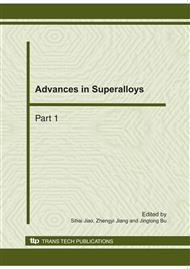p.1894
p.1898
p.1904
p.1911
p.1917
p.1921
p.1925
p.1930
p.1937
The Microcontact Analysis of Contact Length between Wheel and Workpiece in Precise Grinding
Abstract:
This paper analyzes theoretically the contact length derived from elastic-plastic mechanics and microcontact theory with the aim of improving the traditional method of predicting roughness factor though experiments. The accuracy of the analysis is verified through experiments. It transpires from the theoretical model that the contact length between a grinding wheel and a workpiece increases with decreasing curvature radius of peak, increasing hardness of the workpiece as well as increasing depth of cut. It is also revealed that the contact length is directly proportional to the square of 0.32 of the hardness, approximately, whilst the square root of surface roughness and the density of peak of the grinding wheel show less influence on the contact length. The analysis method has reduced the variation between predicted and experimental values than that of the old methods. These results will be beneficial in analysing and designing the product quality of grinding.
Info:
Periodical:
Pages:
1930-1936
Citation:
Online since:
October 2010
Authors:
Price:
Сopyright:
© 2011 Trans Tech Publications Ltd. All Rights Reserved
Share:
Citation:


